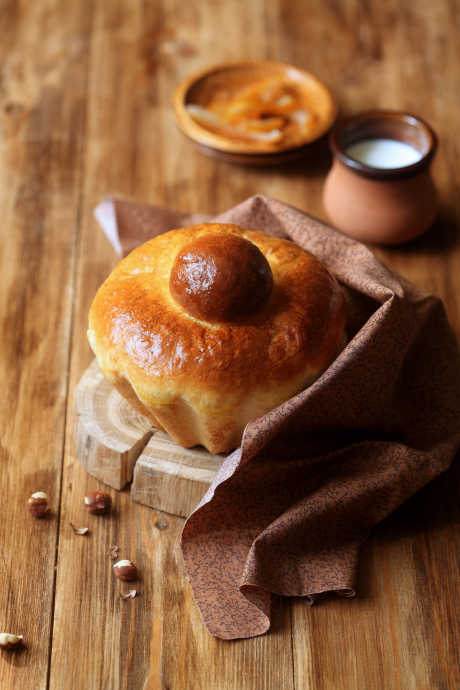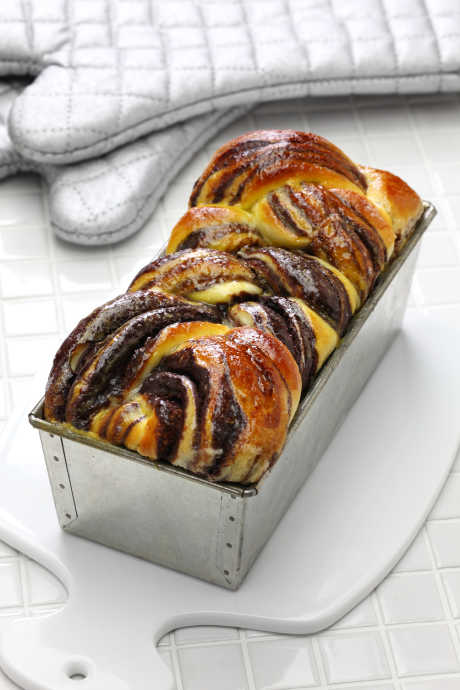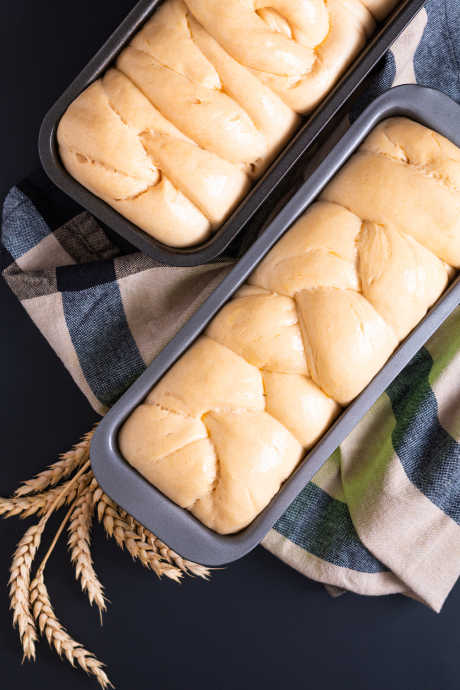How to Make Brioche
Posted by Julie on Apr 8th 2020
Looking for something new to bake? We are here to help keep you busy and well-fed. Today’s project is brioche. It’s a light buttery yeasted dough that can be baked into sweet or savory rolls or loaves. You’ve probably had it in the form of a sandwich bun, but there’s much more you can do with this versatile dough. Keep reading to learn more about how to mix, shape, and bake brioche.
Check and Prep Your Ingredients
Brioche differs from other yeasted bread doughs both in terms of its ingredients and how you mix them. We’ll start with the ingredients here. For the purposes of this post, we’ll refer to brioche recipes from three sources: Delish, Bon Appetit, and Serious Eats.

While other bread recipes might include sugar, milk, and eggs, it’s butter that’s characteristic of brioche. Be sure you have plenty of butter on hand -- up to two sticks (a full cup), depending on the recipe you use. You’ll also need up to a half-dozen eggs. Use whole milk; with all that butter, this is no time to cut calories with skim milk. Even if you plan to use your brioche dough for a savory creation, don’t leave out the sugar. The yeast depends on it.
Speaking of yeast, check your recipe, but you should be able to use either active dry yeast or instant yeast. Either way, make sure your yeast is fresh and the water is warm enough to activate it, but not so warm the yeast dies. In fact, all of your ingredients should be room temperature, especially your butter and eggs.
Mix, and Then Mix Some More
You have a few options for how you begin mixing your ingredients. If you’re using active dry yeast, we recommend proofing it in warm water before adding anything else. Serious Eats starts with this step, allowing the yeast to activate for two minutes before adding the rest of the ingredients (except butter) and starting the mixer. They also suggest mixing by hand for a few minutes and allowing the ingredients to sit for another few minutes before turning on the mixer. The dry ingredients start to absorb the wet ingredients, which makes mixing easier.
The Delish recipe calls for making a sponge, which we mentioned in our post on homemade bagels. Making a sponge simply means mixing yeast, liquid, and a portion of the flour, and allowing it to rise and ferment briefly before adding the rest of the ingredients. You’ll know the sponge is ready when it starts to enlarge, indicating the yeast is producing gas.
Once you’ve added all of the ingredients except butter to the bowl, mix on medium speed with a dough hook. You may need to scrape the sides occasionally to ensure all the ingredients are blended. Keep kneading with the dough hook for several minutes to develop the gluten. You can check the progress of your dough by stretching a piece between your hands. If you can pull it thin without the dough tearing or webbing, it’s ready for the next step.
Butter: The Key to Brioche
Butter is what makes brioche so delicious, but it’s also why brioche has a reputation for being difficult. Mixing butter into the dough must be done slowly, with small pieces of softened butter. This step requires both patience and persistence.
Let the mix run on low speed, and start adding the butter, one tablespoon at a time. It should be soft enough to mix, but not so soft that it’s melting. Allow each piece of butter to mix into the dough before you add the next piece, which could mean mixing for a minute or more between pieces. If you go slowly, the dough will absorb the butter while the gluten remains intact.

After you’ve added all the butter, keep mixing for several more minutes. It will take a while for the dough to come together; Delish estimates 5-7 minutes, while Serious Eats suggests up to 15 minutes. Bon Appetit comes in right in the middle at 8-9 minutes. Rather than relying on a set timeframe, listen for the sound of the dough as it mixes. When the dough slaps against the side of the bowl, it’s ready for you to pull a piece between your hands to test how thin it will stretch.
Proof and Chill Your Dough
Now it’s time to leave your dough alone and let it rise. How long you let it rise depends on when you want to enjoy your brioche, how flavorful you want it to be, and how much patience you have. You can let it rise for an hour, or you can proof it overnight.
We’ve talked about proofing in all of our posts on yeasted dough, from pizza and calzones, to bagels and soft pretzels. Allowing your dough to sit overnight in the refrigerator helps it develop even greater depth of flavor. However, if you can’t wait that long, we recommend following the Delish recipe that includes making a sponge. That will give your dough extra fermentation time. You can also divide the dough and bake half now, half later.
Lightly grease the inside of a bowl to hold your dough while it rises. Make sure to choose a bowl large enough to accommodate some expansion. Then take the edges of your dough and stretch it into a ball, tucking the edges underneath. Serious Eats explains this strategy helps trap all the gas inside the dough as it rises. Even if you’re going to proof your dough overnight, let it rise for an hour in a warm spot before transferring it to the refrigerator.
One Last Rise
We know you probably don’t want to hear this, but you’ll need to let your dough rise one more time before baking. Take it out of the refrigerator, roll and shape it on a lightly-floured surface, and pop it into a pan greased with butter. Allow it to rise for at least an hour, according to Bon Appetit, or up to three hours per Serious Eats. You want the dough to puff up to nearly double its size before you slide it into the oven. Also, whisk an egg with a couple teaspoons of water, and brush the top of the dough with egg wash before baking.

Get Creative!
Now that you know the basics of how to make and bake brioche dough, what can you do with it? Turns out, this dough is incredibly versatile.
- Bake it in a loaf pan, then slice it for French toast or cube it for bread pudding
- Make brioche à tête, with a ring of dough as the base and a smaller cone of dough on top
- Cut into triangles, and roll them into crescents
Want more specific directions? This post from King Arthur Flour offers several sweet and savory ideas, including Pesto Cheese Brioche Loaf, Chocolate Chip Brioche Strips, Cinnamon Sugar Brioche Swirl, and Classic Brioche Buns. Once you’ve made the dough and let it rise, you really can’t go wrong with how you choose to shape and season it.

